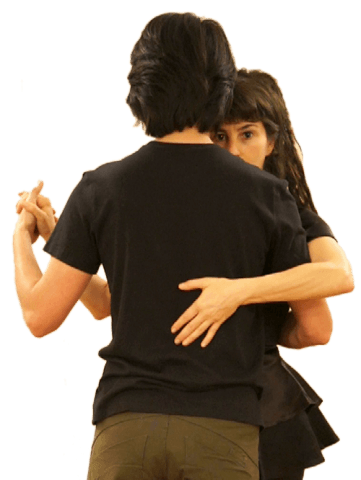This is a complicated point. Please read it very very carefully.
I am interested in how we manage people and our own emotions. I call these our control systems.
I am also interested in the the way that traditional tango etiquette protects our egos. (I do believe that all dancers’ egos need to be protected. The reason is that when we do this dance, we are putting ourselves out at 150% of our intellectual, physical, emotional, and spiritual capacities. In no other arena of life do we need to show up in every dimension. Therefore, we are by definition more vulnerable in tango than in any other activity, and this requires care.) The traditional tango codigos manage ego issues with a rigid veil of silence.
I see some changes to the codigos happening, which seem at first to be softer and more modern, but which may actually be less careful and caring.
Let me first point out that in teaching Queer Tango, I noticed a softer atmosphere between the students than in heterosexual classes and I thought this was a very good thing. The students would collapse one one another, giggling and hugging. I felt that was a kinder learning environment. People were better able to keep tango in perspective and have fun, instead of taking it too seriously.
Obviously I have nothing against hugging, laughter, or kindness.
But I see both hugging and laughter being used in some not-exactly-kind ways.
How to end the dancing, for now.
Traditionally, we say “thank you”. Now, we hug to dismiss the partner. This increase in warmth at first appears to be a sign that we are indeed all affectionate friends.
It also means that the person who is dumping you after two songs has smothered you with an excess of pseudo-warmth to cover their rudeness.
How to manage mistakes during the dance.
I observed a lot of laughter at Practica El Motivo in Buenos Aires. I realized that couples were using laughter to create an appearance of “oh yeah, we’re just friends messing around” to cover their mistakes.
Now I feel this permission to laugh while dancing is used in two ways, as an excuse not to concentrate (usually on the part of Revels) and as a shifting of blame (usually on the part of Marks). When we laugh we are implying that the fault was mutual. (Which sometimes it is, occasionally with hilarious results!)
When one person knows they were at fault, laughter is actually an unkind shift of blame to the couple.
I don’t think it’s helpful to apologize for every moment of a flawed dance, and I find it distruptive when a partner does so. But I do think it’s helpful to take responsibility when you know you were at fault and when you think the other person may have been blaming themselves. If I lose balance or concentration, and especially if I anticipate, I will whisper “sorry” or “that was my fault”. I believe that doing this shows an interest in my partner’s development and our future together. I want them to know what they do well and what they don’t.
Classic codigos recommend silence while dancing, which certainly is better for concentration. While I don’t agree at all that “it’s always the Mark’s fault” I do believe that Marks can always improve their precision, and Revels can always benefit by more concentration. So there are riches in the silence too.
I don’t see much value in sloppy, inattentive dancing covered over with giggling.














